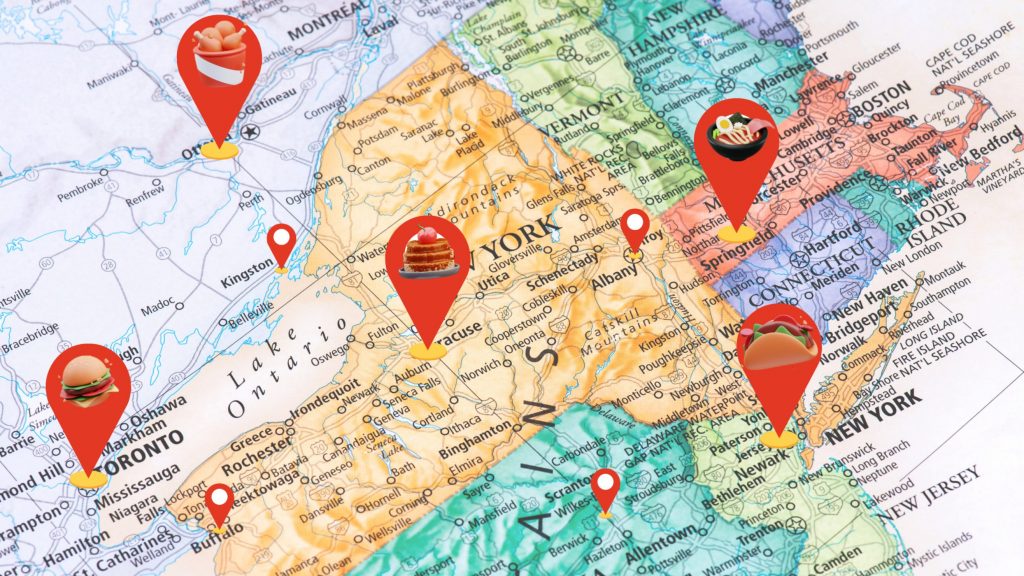Exciting news: Brizo FoodMetrics has been acquired by Datassential! Learn more.

When you are selling to foodservice operators, having insights into who needs your product and why they need it can make a huge difference in your sales process. If you work in the highly competitive restaurant and hospitality sector, you are often battling other vendors for the same business opportunity, trying to meet the needs of today’s restauranteur. In this fast-paced foodservice market, suppliers are competing over limited attention from operators who are always pressed for time. The only way you’ll get your message across is by being precise with sales prospecting and using data-driven targeting to keep your sales pitch tight and on point.
The reality is – selling into the restaurant market is not an easy task. However, you can certainly position yourself in a way that ensures you are reaching prospects first, and that you are reaching the ones that are good fit for your product or services. Using real-time foodservice market analytics, like what we do at Brizo Food Metrics, can put you in this position to succeed.
Foodservice businesses are often hard to find, but there are ways you can go after them. You could start by looking through online directories and lists or use Google Maps with restaurant review sites like Yelp or better yet use a foodservice market analytics platform like Brizo FoodMetrics that has all the restaurant insights you need in one place.
When deciding which of the foodservice businesses will be an ideal customer, here are some of the criteria you may want to consider in your targeting and segmentation:
These are some of the ways you can qualify your market to narrow in on your sales prospects that have a higher chance of converting into a sale.
When selling your product to foodservice establishments, you need to know who is using your product or services and who is not. It is a waste of time to reach to cold call and email potential customers if they already have what you are selling, or if your product doesn’t make sense for their type of foodservice operation. For example, reaching out to a vegan restaurant to sell organic high-quality beef products is probably not a good use of their time and yours.
Even if a potential customer already has a POS system, what features does your company have that theirs doesn’t? Certain restaurants may be using your competitor’s product, but that doesn’t mean there is no potential for you land them as a customer.
Once you have a clear idea of who needs your product and what they do, then it’s time to start gathering names and contact information. Be sure that the contact you are reaching out to is actually in charge – depending on your product you may need to reach out to head office or the local operator.
When you find prospects that do need your product, you will still need to have a deeper understanding of their business needs. Just because they need your product, doesn’t mean that this is an automatic sale (remember, there are competitors also vying for your customer!). Here are a few things to consider when reaching out to potential customers:
The more you know about your prospect, the better chance they will buy from you. Researching their foodservice operations and gaps in order to provide value when conversing with them can help create an informative conversation that leads towards closing deals!
Even if you have a killer product that is better than what your competitors have, it may be irrelevant if your competitors are reaching customers first. Being first counts for something, even if the quality of your product vs. theirs is at play here. If you are the first to reach a customer and you have a better product, then your sales team will be unstoppable when selling in the restaurant and hospitality industry.
So how exactly can you get to a customer first? By using competitive intelligence (CI), which is the act of collecting and analyzing actionable data and information about competitors and the marketplace to form a business strategy. Understanding the market share of your competitors can open up untapped opportunities for you to attack first. Another approach is using handy market analytics tools like Brizo FoodMetrics that can help you identify new locations and changes to existing restaurants, giving you an edge over other suppliers in the foodservice industry.
In the foodservice industry, there really is no time to be slow. Whether you are a server, manager, owner, operator, or supplier in the industry, speed and being proactive is key. As a salesperson, waiting too long to reach out to potential customers means losing customers to your competitors. There is no time like the present – so stay on your toes and get ahead of your competitors today. Here is how Brizo can help:
Reach out today for a free trial, and see how Brizo FoodMetrics can help you win customers first before your competitors get to them.share